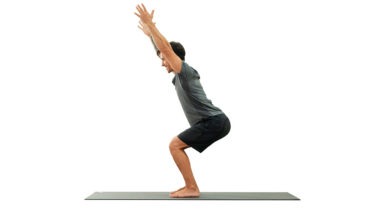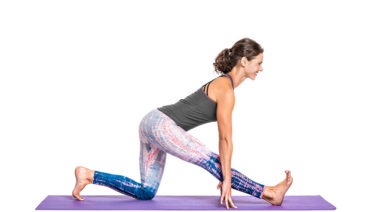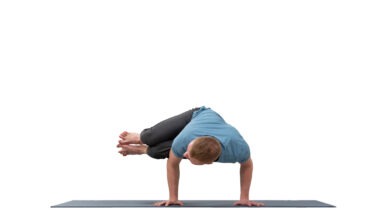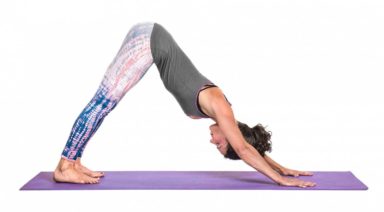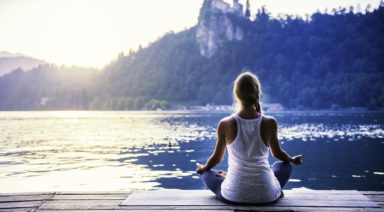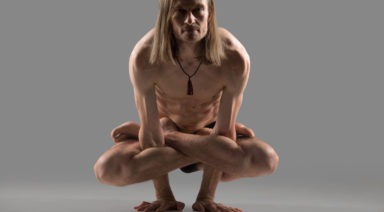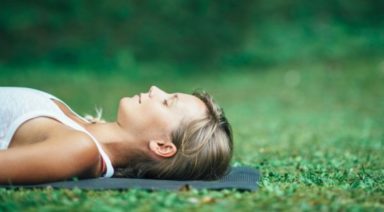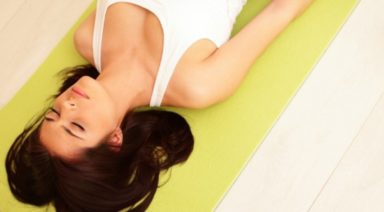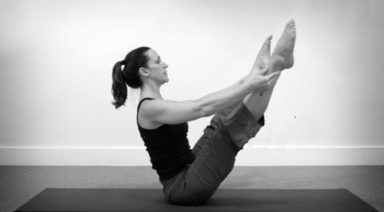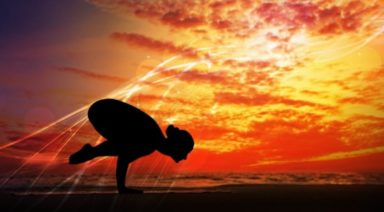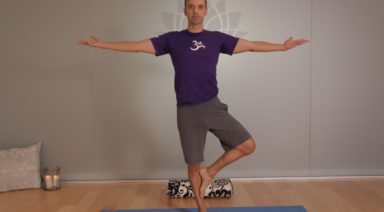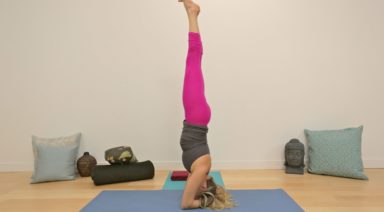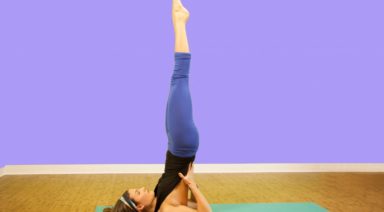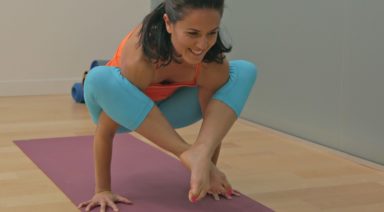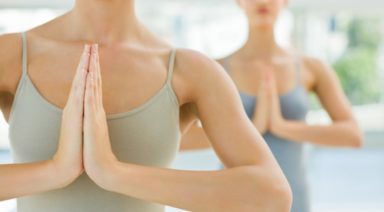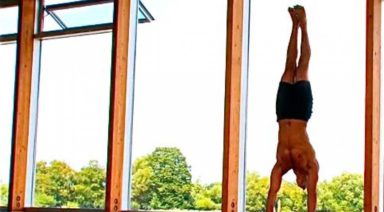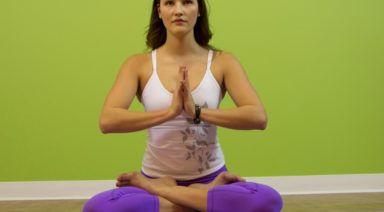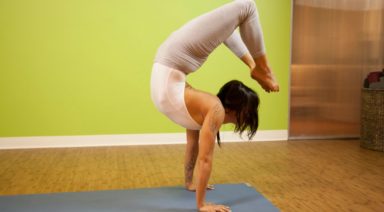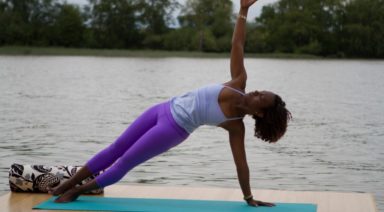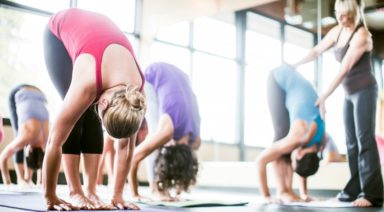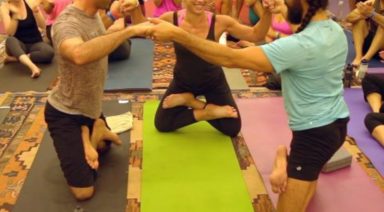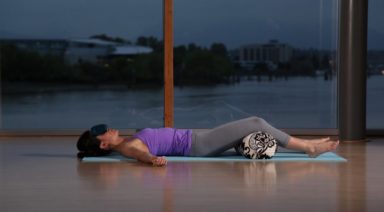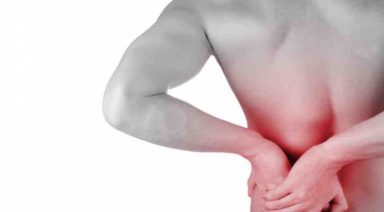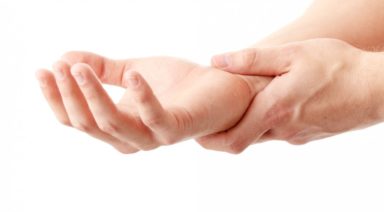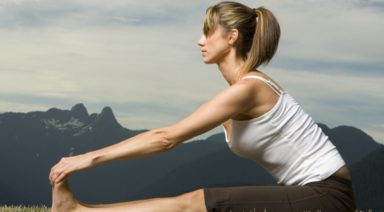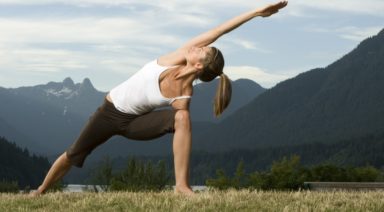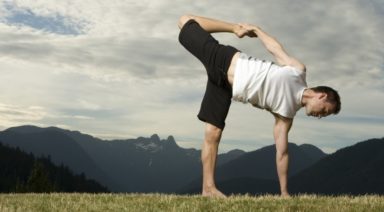Mandukasana: Frog Pose
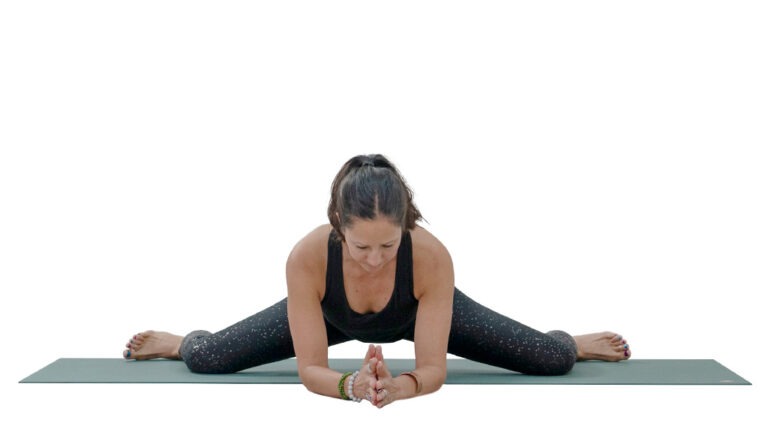
Mandukasana (man-doo-KAHS-ah-nah) is a simple yet intense pose that brings length to the spine and deep stretches to the inner thighs and groins. This pose is best for warmed-up hips, and healthy knees and low backs.
SANSKRIT:
- Mandu = frog
- Asana = pose
PHYSICAL BENEFITS:
- Stretches the inner hips and groins.
- Encourages length in the spine.
- Strengthens the back muscles.
PREPARATORY POSES:
- Child’s pose | Balasana
- Wide-legged forward fold | Prasarita padottanasan
- Bound angle pose | Baddha konasana
SEQUENTIAL POSES:
- Garland pose | Malasana
- Bound garland | Baddha malasana
- Crow pose | Bakasana
COUNTER POSES:
- Cow face pose | Gomukhasana
- Supine twist | Jathara parivartanasana
ADJUSTMENTS/MODIFICATIONS:
- Use a pillow or folded blanket under your knees.
- Place a bolster under your torso for additional support.
STEP-BY-STEP:
- Begin in a table top shape facing the long edge of your mat.
- Walk your knees out wider than your hips. Flex your feet so your toes face outward and your heels are directly behind your knees.
- Option to place additional padding (e.g. blanket) under your knees or walk your knees closer together.
- Walk your hands forward a little or a lot. If you have room, place your forearms on a block or on the ground.
- Reach the crown of your head forward and your tailbone back. Keep your hips in the same plane as your knees (if you saw yourself from the side, knees would look like they’re under your hips).
- Lift your belly away from the ground.
- Hold for up to two minutes, then gently release to child’s pose.
###Legal Disclaimer Before participating in any exercise program or using any fitness products or services that may be described and/or made accessible in or through the Gaia Website and/or the Services, you should consult with a physician or other healthcare provider. Read more about Gaia’s Terms Of Use.
Utkatasana: Chair Pose
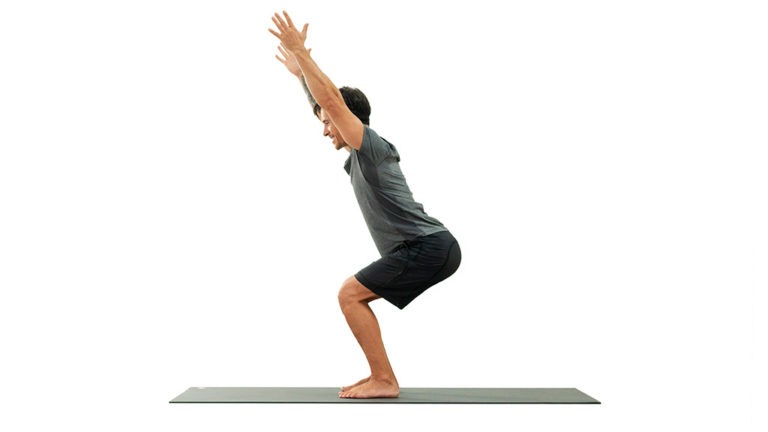
ADJUSTMENTS | BENEFITS | SEQUENCING | SANSKRIT | STEPS
A challenging pose with hidden benefits, utkatasana (OOT-kah-TAHS-anna) works your body inside and out. Aside from strengthening your legs, this powerful pose also improves the health of your diaphragm and stimulates your heart. Practicing regularly will not only increase your physical endurance, it also encourages your chest and arms to open, creating more space in your body energetically.
Philosophy + Origin
While sitting in a chair is a common act for most of us today, chairs were once, and in some locations still are, considered a luxury. A throne in particular is a seat of power, one assumed by leaders around the world. The pose utkatasana, translated to mean powerful pose, invites individuals to sit on their throne, their seat of power. Embracing the challenge of the pose, and recognizing the strength that is generated when assumed thoughtfully and in proper alignment (physically and spiritually), you can begin to refine all aspects of your life, allowing yourself to step into roles of leadership and responsibility with clarity and confidence.


